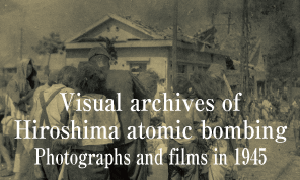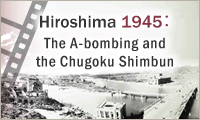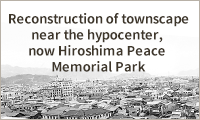Commentary: Does U.S. subcritical nuclear testing relegate “world without nuclear weapons” to mere slogan?
May 18, 2024
by Yumi Kanazaki, Staff Writer
The 34th subcritical nuclear test carried out by the United States once again confronted the A-bombed city of Hiroshima with the reality that permanent possession of nuclear weapons is fundamental U.S. government policy. Just one year ago, at the summit meeting of the Group of Seven industrialized nations (the G7 Summit) held in Hiroshima, U.S. President Joe Biden signed off on the nuclear disarmament statement known as the “Hiroshima Vision.” But the test seems to prove that the “ultimate goal of a world without nuclear weapons,” a concept barely touched on in the vision statement, was mere political theater.
The United States has conducted a wide variety of subcritical and other nuclear tests to ensure that its nuclear weapons are “safely” maintained and managed and to be secure in the knowledge that the weapons will function as expected should their use ever be required. The country has been criticized for its actions, which in effect support the modernization of nuclear arsenals and throw a wet blanket on nuclear disarmament efforts.
By definition, subcritical nuclear tests do not yield a nuclear explosion and, for that reason, do not violate the Comprehensive Nuclear-Test Ban Treaty (the CTBT, a treaty that has yet to formally enter into force). Some persistently argue that subcritical testing is a necessary evil to ensure that underground nuclear testing is never resumed. The United States plans to increase the frequency of such tests by the end of the 2020s.
When all is said and done, subcritical nuclear testing will likely continue so long as reliance on nuclear deterrence is not rejected. The Japanese government is firmly committed to its policy of dependence on the nuclear deterrence provided by the United States. Despite the voices raised by people in the A-bombed cities, the government fails to voice its own protest against the subcritical nuclear testing conducted by the United States, based on its stance that “the tests do not violate the CTBT.” If Russia were to also conduct subcritical nuclear testing, a possibility that has been pointed out by some quarters, would the government maintain its wait-and-see policy?
The preamble to the Treaty on the Prohibition of Nuclear Weapons (TPNW), which went into effect in 2021, prohibits explosive and other nuclear testing out of concern about any nation being reliant on nuclear deterrence or working to modernize its nuclear weapons arsenals. If we truly want to avoid making a mere slogan out of the ideal “a world without nuclear weapons,” the most basic of steps would be to oppose and halt all forms of nuclear testing.
(Originally published on May 18, 2024)
The 34th subcritical nuclear test carried out by the United States once again confronted the A-bombed city of Hiroshima with the reality that permanent possession of nuclear weapons is fundamental U.S. government policy. Just one year ago, at the summit meeting of the Group of Seven industrialized nations (the G7 Summit) held in Hiroshima, U.S. President Joe Biden signed off on the nuclear disarmament statement known as the “Hiroshima Vision.” But the test seems to prove that the “ultimate goal of a world without nuclear weapons,” a concept barely touched on in the vision statement, was mere political theater.
The United States has conducted a wide variety of subcritical and other nuclear tests to ensure that its nuclear weapons are “safely” maintained and managed and to be secure in the knowledge that the weapons will function as expected should their use ever be required. The country has been criticized for its actions, which in effect support the modernization of nuclear arsenals and throw a wet blanket on nuclear disarmament efforts.
By definition, subcritical nuclear tests do not yield a nuclear explosion and, for that reason, do not violate the Comprehensive Nuclear-Test Ban Treaty (the CTBT, a treaty that has yet to formally enter into force). Some persistently argue that subcritical testing is a necessary evil to ensure that underground nuclear testing is never resumed. The United States plans to increase the frequency of such tests by the end of the 2020s.
When all is said and done, subcritical nuclear testing will likely continue so long as reliance on nuclear deterrence is not rejected. The Japanese government is firmly committed to its policy of dependence on the nuclear deterrence provided by the United States. Despite the voices raised by people in the A-bombed cities, the government fails to voice its own protest against the subcritical nuclear testing conducted by the United States, based on its stance that “the tests do not violate the CTBT.” If Russia were to also conduct subcritical nuclear testing, a possibility that has been pointed out by some quarters, would the government maintain its wait-and-see policy?
The preamble to the Treaty on the Prohibition of Nuclear Weapons (TPNW), which went into effect in 2021, prohibits explosive and other nuclear testing out of concern about any nation being reliant on nuclear deterrence or working to modernize its nuclear weapons arsenals. If we truly want to avoid making a mere slogan out of the ideal “a world without nuclear weapons,” the most basic of steps would be to oppose and halt all forms of nuclear testing.
(Originally published on May 18, 2024)






